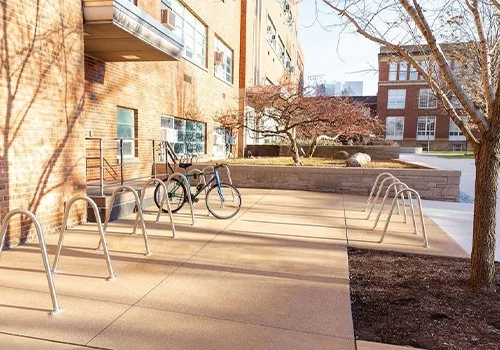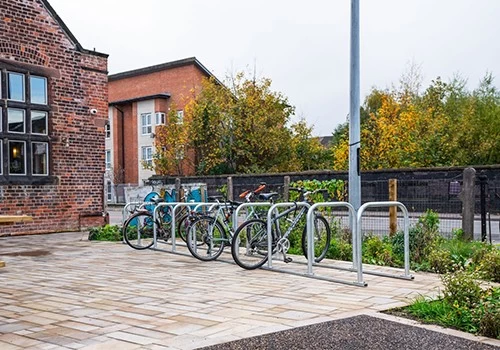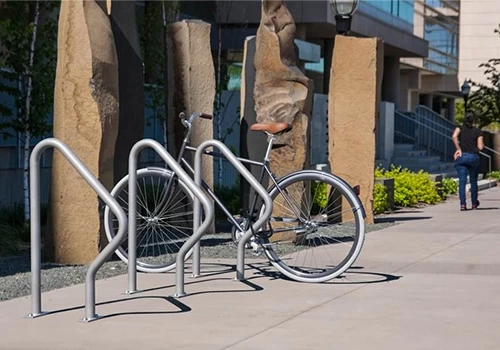Specifications
Model Number : PV-SC-001
Type: Bike parking and storage
Color:Yellow,Black,Green,Red,or Customized.
Style : both indoors and outside
Material : carbon steel
Loading: According to customer need
Size :195*23.2*75cm,200.55*23.2*75cm,or Customized.
Finish: hot-galvanized
Specifications
Model Number : PV-0081-01
Type: Bike parking and storage
Color:silver
Style : both indoors and outside
Material : carbon steel
Loading: According to customer need
Size :Height 1463mm, Depth 1114mm
Finish: hot-galvanized
Model Number : PV-0081-01
Type: Bike parking and storage
Color:Black
Style : both indoors and outside
Material : carbon steel
Loading: 2-10 bikes (According to customer need)
Size :Height 1463mm, Depth 1114mm
Finish: hot-galvanized
Model No.: PV-H1
Size: w605*D400*H330mm
Specification: Round tube:¢16*1.2mm
Finish: Power coated
Net Weight: 1.6 kgs
Packing size:6pcs/ctn
MOQ: 100pcs
Model Number : PV-0024-01
Material : carbon steel/stainless steel
Loading: according customer space size,we can design according the size
Size : W1977*D1130(depend on your parking space)*H2500mm
Finish: Powder coated ,hot-galvanized/electric polish
Packing size :2000*2000*2500mm(40 parking space )
Powder coated ,hot-galvanized/electric polish
Product number:PV-0046-01
Material:carbon steel
Specification:10.2*59*28CM or Customized.
MOQ:100PCS
Port:Shanghai
Trademark:PV
Model Number : PV-0081-01
Type: Outdoor Bike Parking Rack
Style : both indoors and outside
Material : carbon steel
Loading: 2-10 bikes (According to customer need)
Size :170.5*116*148CM
Finish: hot-galvanized
Model Number : PV-0055-01
Type: compact flat pack /slot
Color:black / silver /yellow/optional
Style :Outdoor/indoor
Material : carbon steel/ stainless steel
Capacity : park 6 bikes
Size : L1400*W1054*H840mm
Net weight :38KG
Finish: powder coating / hot galvanized /elctropolishing
Packing size :1490*860*160mm 1pcs/ctn
Product Name: Multi-Capacity Horizontal Two Tier Bike Parking Rack
Material: Carbon Steel
Finish: Powder coated
Post: 80mm * 80mm thickness: 3mm
Steel plate: thickness: 2mm
Dimension: 1325*1890*1830mm
Weight: 370 kg/set
Model: PV-0067-01
Material: stainless steel 304
Pipe: 50 mm* 2.5 mm
Size: 900*700 mm(L*W)
Surface treatment: polishing

The modern urban landscape is evolving to accommodate both functionality and aesthetic appeal. As more people turn to cycling for transportation, cities are increasingly focused on creating bike-friendly environments. But providing bike parking is not just about functionality—it’s also an opportunity to enhance the visual and cultural experience of public spaces. By integrating public art into bike parking solutions, urban planners and businesses can not only fulfill a practical need but also enrich the community with creative, vibrant designs.
In this blog post, we’ll explore how public art can enhance bike parking aesthetics, provide an introduction to basic types of bike racks, and showcase inspiring examples of artistic bike parking that serves both a functional and aesthetic purpose.
Public art plays a vital role in urban design by adding beauty, meaning, and identity to shared spaces. In bustling cities, where concrete and steel often dominate, the inclusion of art can transform a mundane corner into an inspiring landmark. When art is incorporated into functional objects, such as bike parking racks, it blurs the lines between utility and creative expression, turning everyday necessities into opportunities for community engagement and beautification.
Bike parking stations, traditionally viewed as mere practical installations, offer a perfect canvas for public art. These spaces can be transformed into sculptures, colorful installations, or culturally significant works that reflect the history or values of the local community. Through public art, a simple bike rack becomes more than just a place to secure a bicycle—it becomes a statement.

Before diving further into how art can enhance bike racks, it’s essential to understand the basic types of bike parking options available. Below are some of the most common bike racks, each offering a functional solution to securely park bicycles.
The U-shape or inverted U bike rack is one of the most widely used designs in urban environments. Simple, sturdy, and cost-effective, these racks provide two points of contact for bicycles, allowing cyclists to lock both the frame and wheels securely. They’re typically made of steel or other durable materials and can be easily installed in a variety of locations. Despite their simplicity, U-shape racks offer an excellent opportunity for customization and artistic enhancement.
Wave bike racks are designed in a continuous curved form, offering multiple points for securing bikes. Their flowing design is naturally more visually engaging than a traditional straight rack, making them a perfect candidate for artistic interventions. They offer a functional solution for high-traffic areas, and their undulating shapes can be modified to reflect artistic themes.
Grid racks are less commonly used in modern urban settings but are still prevalent in some areas. These racks consist of a metal grid or latticework where bikes can be parked. Although they can accommodate multiple bikes at once, grid racks often fall short in terms of aesthetics and bike security. However, they can be reimagined as a canvas for public art, with artists able to design intricate patterns or embellishments.
Post-and-ring racks are another common type of bike parking solution. They consist of a vertical post with a circular ring attached, allowing cyclists to secure their bike frames to the post. This simple design is often found in urban centers and can easily be enhanced with decorative elements or sculptural forms to create a more aesthetically pleasing solution.
Vertical bike racks allow bikes to be stored upright, saving space in areas where horizontal space is limited. They are increasingly popular in dense urban areas and can be designed with artistic patterns or vibrant colors that enhance their visual appeal while maintaining their functionality.
Some cities have taken the concept of artistic bike racks to the next level by commissioning sculptors to create racks that double as public art installations. In these cases, bike parking is no longer just a practical necessity but also a piece of the city’s cultural fabric.
For example, in Portland, Oregon, sculptural bike racks can be found throughout the city, designed to resemble abstract shapes, animals, or cultural symbols. These racks invite people to interact with their environment, taking ordinary objects and transforming them into whimsical, engaging works of art.
Another way public art enhances bike parking is through murals and painted installations. In areas where space is tight, and there’s no room for large sculptures, murals on walls adjacent to bike racks can elevate the aesthetic. Bold colors and intricate designs provide a backdrop that brings life to the parking area. In some cities, local artists collaborate with businesses to create bike parking that complements nearby murals, creating a harmonious blend of form and function.
For example, in New York City, several bike parking spaces are enhanced with vibrant murals that depict scenes from the city’s history, providing both a cultural and practical amenity for cyclists.
One of the most effective ways to integrate public art into bike parking is through themed racks that reflect local culture. These racks can be designed to look like iconic objects or symbols that are significant to the community. In Toronto, Canada, some bike racks are designed in the shape of maple leaves, reflecting the country’s national symbol. In San Francisco, racks shaped like guitars or music notes celebrate the city’s rich musical heritage.
Themed bike racks provide a sense of place, making the community feel more connected to its environment and fostering local pride.

While integrating public art into bike parking offers numerous aesthetic and social benefits, it’s essential to consider the practical side. The materials used in both the racks and the art must be durable enough to withstand weather conditions, heavy use, and potential vandalism. Steel, powder-coated metal, and durable paints are often used to ensure longevity.
Maintenance is another key factor. Cities and businesses must plan for regular upkeep, particularly for bike racks that incorporate intricate designs or moving parts. Regular maintenance ensures that the racks remain functional and visually appealing over time.
Incorporating art into bike parking should not come at the expense of accessibility. ADA compliance is crucial in ensuring that bike parking facilities are accessible to all users, including those with disabilities. Artistic enhancements should complement, rather than hinder, the functionality of bike racks. For example, sculptures or installations should not block pathways or create obstacles for cyclists trying to access parking areas.
Integrating public art into bike parking can be more expensive than installing standard racks. However, the long-term benefits—enhancing the visual appeal of public spaces, promoting cycling, and fostering community pride—can outweigh the initial costs. Many cities and businesses collaborate with local artists, offering grants or public funding to offset the expenses associated with public art projects.
Incorporating public art into bike parking enhances not only the aesthetics of urban spaces but also their functionality and cultural significance. From sculptural racks to themed designs and murals, these creative approaches invite engagement, promote cycling, and enrich the overall experience of city life. As more cities and businesses recognize the value of public art, bike parking areas will continue to evolve into vibrant, inspiring spaces that serve both cyclists and the community at large.
For bike rack manufacturers, embracing this trend offers a unique opportunity to combine craftsmanship with creativity, transforming everyday objects into works of art that contribute to the beauty and culture of urban spaces.